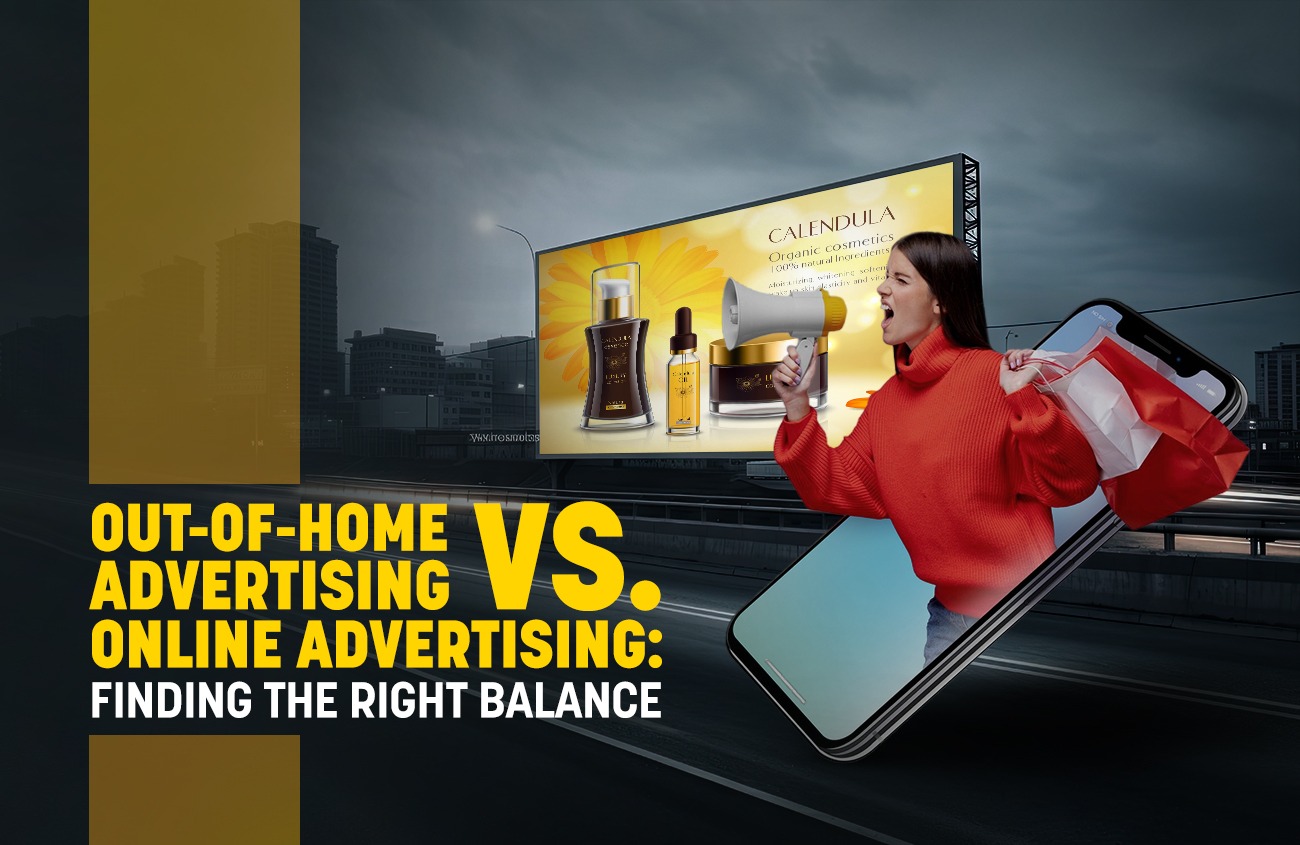Out-of-Home Advertising vs. Online Advertising: Finding the Right Balance
- By CHAMS DIGITAL
- May 09 , 2024
Effective allocation of advertising funds is a persistent difficulty for firms operating in the current digital era. It can be difficult to strike the appropriate balance with so many options available, ranging from conventional out-of-home (OOH) advertising to the wide world of online advertising. Nonetheless, a well-rounded advertising plan that optimizes reach and engagement may be achieved by being aware of the advantages and disadvantages of each.
Out-of-Home Advertising: Making an Impact Beyond the Screen
out-of-home advertising encompasses a wide range of mediums, including billboards, transit ads, posters, and more. its strength lies in its ability to reach audiences in the physical world, where they live, work, and commute. ooh advertising offers unparalleled visibility and can leave a lasting impression on passersby, making it a valuable tool for building brand awareness.
One of the key advantages of OOH advertising is its ability to target specific locations and demographics. By strategically placing ads in high-traffic areas or near relevant venues, businesses can effectively reach their target audience. Additionally, OOH ads can be highly creative, leveraging unique formats and designs to capture attention and convey messaging in a memorable way.
However, OOH advertising does have its limitations. It can be costly to produce and maintain, especially for premium placements in high-demand areas. Additionally, measuring the impact and ROI of OOH campaigns can be challenging compared to digital advertising, where data and analytics are readily available.
Online Advertising: Harnessing the Power of Digital Channels
Online advertising has revolutionized the way businesses connect with consumers, offering unprecedented targeting capabilities, real-time tracking, and diverse ad formats. From search engine marketing (SEM) and social media ads to display banners and video commercials, the digital landscape provides endless opportunities to engage with audiences across platforms and devices.
One of the greatest strengths of online advertising is its ability to deliver personalized experiences based on user data and behavior. By leveraging advanced targeting tools, businesses can tailor their ads to specific demographics, interests, and online behaviors, increasing relevance and driving higher conversion rates. Moreover, the flexibility of digital advertising allows for real-time optimization, enabling advertisers to adjust their campaigns on the fly based on performance metrics.
Despite its effectiveness, online advertising also presents its own set of challenges. The digital space is highly competitive, with countless brands vying for consumers' attention. Ad fatigue and ad blocking software further complicate matters, making it crucial for advertisers to deliver compelling, relevant content that resonates with their target audience. Additionally, privacy concerns and regulations surrounding data usage require advertisers to tread carefully and prioritize transparency and consent.
Finding the Right Balance: Integrating OOH and Online Advertising Strategies
Finding the ideal mix between online and off-line advertising is crucial for success, even though both have their own advantages and difficulties. Instead of considering them as rival tactics, companies should think about how they may work in tandem to produce a unified and successful advertising campaign.
One strategy is to use internet advertising to reinforce messaging, increase engagement, and spur action, and to use out-of-home (OOH) advertising to drive awareness and reach a large audience. A billboard advertisement, for instance, might arouse curiosity and interest in viewers, leading them to look up additional information online or interact with the company on social media.
Additionally, combining online and offline advertising promotes greater coherence and synergy across media, strengthening brand messaging and improving the efficacy of campaigns as a whole. Through synchronizing creative materials, message, and targeting tactics, companies can establish a cohesive brand encounter that strikes a chord with customers throughout all interactions.
in conclusion, striking the correct mix between online and out-of-home advertising necessitates a calculated approach that takes into account the distinct advantages and disadvantages of each medium. Businesses may develop a potent advertising strategy that optimizes reach, engagement, and return on investment by combining the flexibility and targeting capabilities of internet advertising with the visibility and effect of out-of-home (OOH) advertising.
